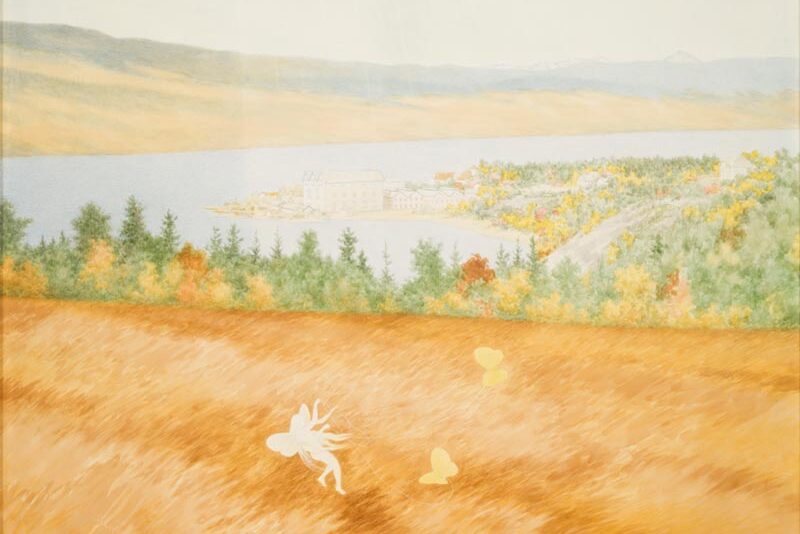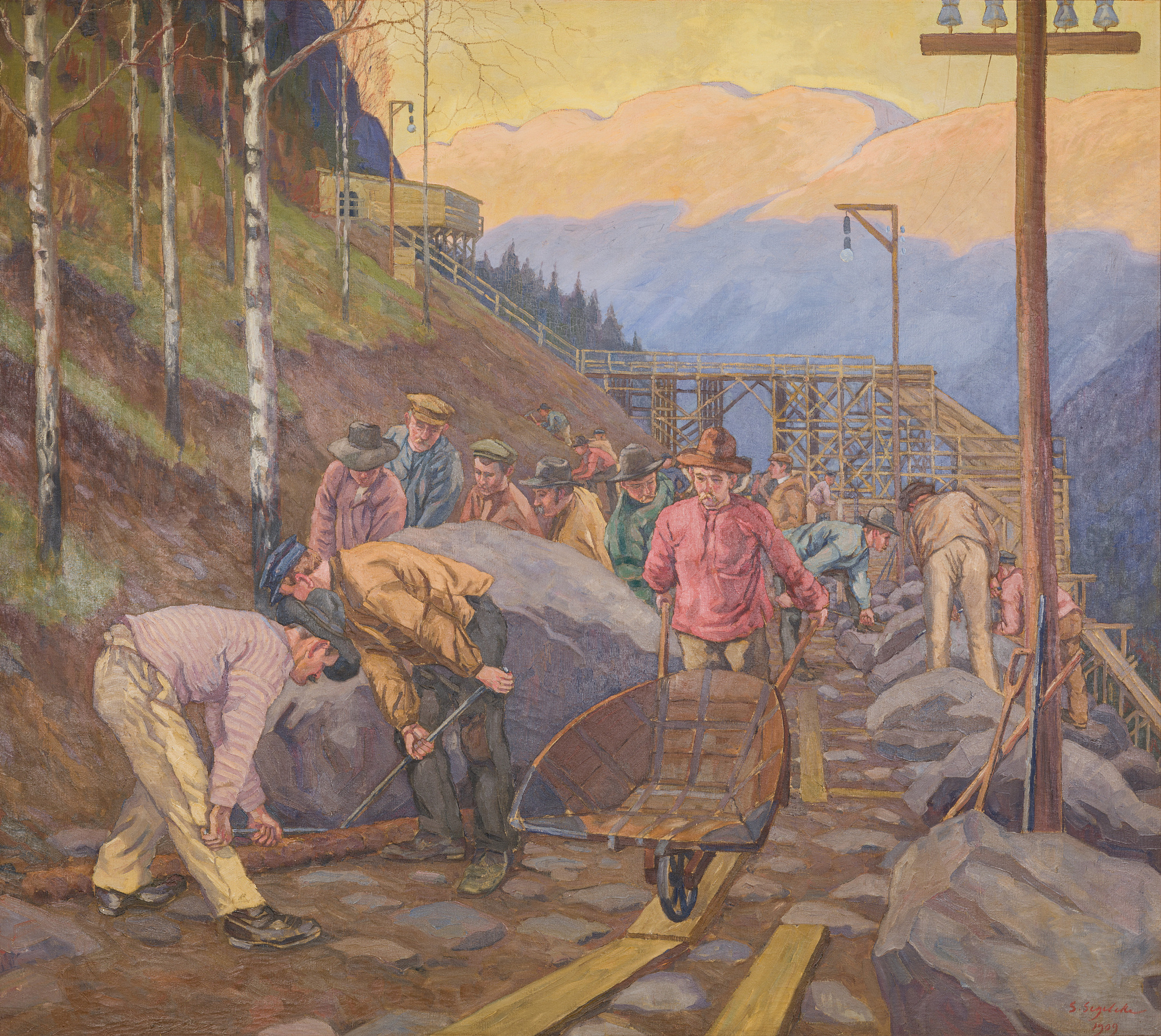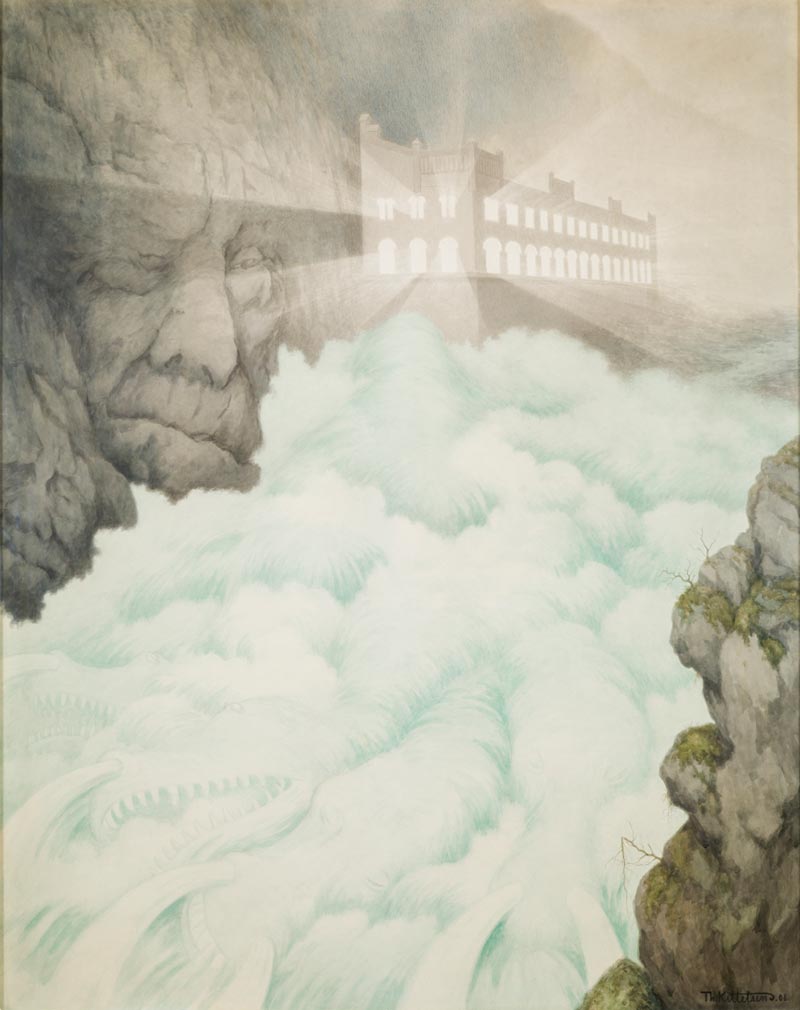Theodor Kittelsen (1857 – 1914) painted the Svelgfoss series, The Fairy Tales of the Waterfall, for Hydro and Sam Eyde in 1907-08. The series depicts the early history of the company and the construction of Hydro’s first hydroelectric power plant in Kittelsen’s characteristic fairytale style. Kittelsen’s commercial work is less well known. In addition to his extensive illustration work for fairy tales and other books, he designed patterns for wood carving and furniture decoration and created wooden toys produced by the Norwegian Handicraft Association. Kittelsen is also the artist behind Bjelland’s famous logo, The Man with the Fish, and designed the Fairy Tale Biscuit for Sætre in 1909.
Around the same time, Thorolf Holmboe (1866 – 1935) designed Hydro’s logo featuring the Viking ship and painted several pieces depicting rivers and dam installations central to Hydro’s production. Holmboe was Hans Gude’s last Norwegian student in Germany and is known for his paintings of the northern Norwegian coast and seabirds. However, less widely known is that he was one of Norway’s most prominent contributors to the art industry. He designed book illustrations, book covers, telegrams, and postcards. Between 1906 and 1925, Holmboe worked for Porsgrund Porcelain, and from 1905 to 1914, he designed silver and enamel works for silversmith David-Andersen. Like Kittelsen, Holmboe was engaged by Sætre, designing their rooster logo in 1909. Holmboe also painted several works on commission for the Holta family and Tinfos.
The lesser-known Severin Segelcke (1867 – 1940), together with his wife Frey, was hired to decorate the newly built administrative building in Rjukan in 1908. For this commission, he painted two large works depicting the construction of the railway in the Vestfjorddal Valley. Segelcke was an officer with training in Germany, where he was close friends with Edvard Munch and Christian Krogh. He was largely self-taught as a visual artist and illustrator, with the exception of studying under Alfred Roll in Paris in 1894 and attending evening classes in etching at the State School of Arts and Crafts (1922-23). Segelcke made his debut at the Autumn Exhibition in 1894 with a portrait of August Strindberg, painted in Berlin. He was a skilled illustrator with a strong sense of composition and fine tonal nuances. He worked for a time as a portrait artist.



